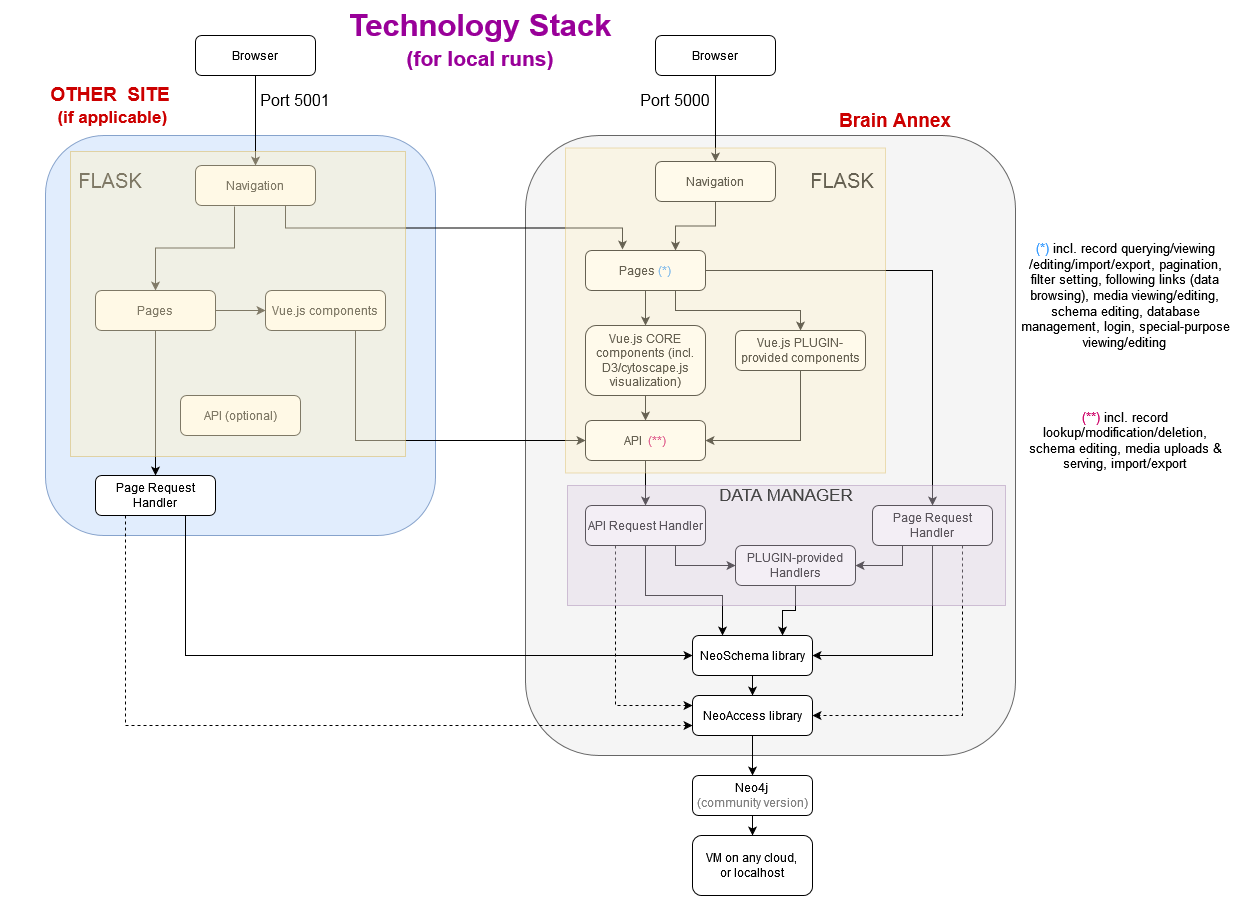Lots of details: best watched full-screen, at high resolution!
|
|
Lots of details: best watched full-screen, at high resolution! |
BUILT-IN USE CASE : Knowledge and Media/Datasets Management made easy, powerful and convenient
When the storage of knowledge/data is combined with a network of "relationships" among the data entities, and a UI layer with easy viewing/browsing/updating/searching – that's when it can feel like a handy "annex" of your brain!
LEARN MORE
Neo4j web app - BrainAnnex Status Report (22-min video with an Oct. 2023 update : focus is on the web app, and its underlying Schema)
Neo4j & BrainAnnex's Overhauled v. 5 (14-min video : focus is on the technology stack, and background on Graph Databases)
A growing series of articles about Neo4j, the Brain Annex technology stack, and use cases (it starts with a gentle introduction about what Graph Databases are really about)
